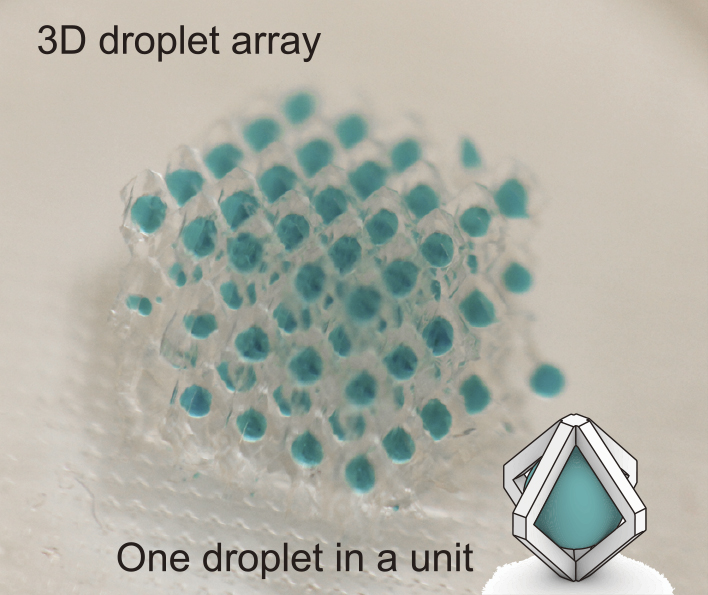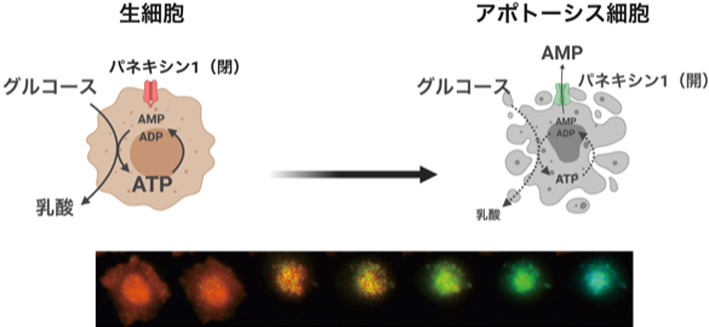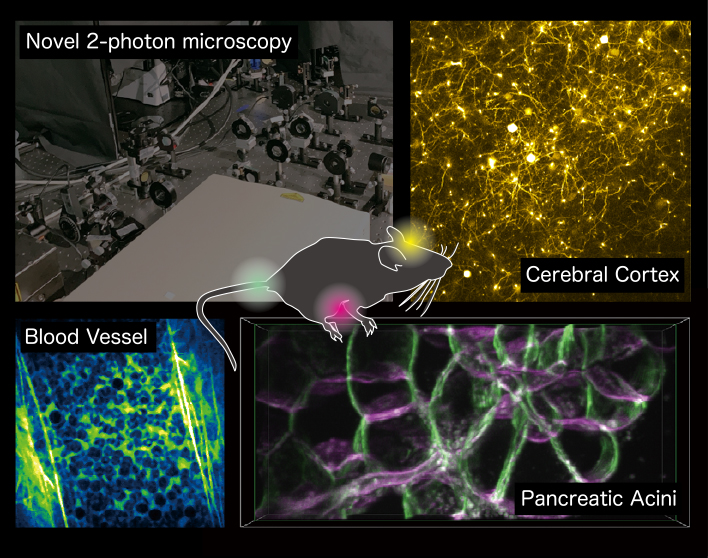
- |<
- <
- 1
- >
- >|
-
Atsushi NAKAGAWA2022Volume 62Issue 2 Pages 99
Published: 2022
Released on J-STAGE: May 25, 2022
JOURNAL FREE ACCESS FULL-TEXT HTMLDownload PDF (118K) Full view HTML
-
Hiroshi SHIMIZU, Yoshihiro TOYA2022Volume 62Issue 2 Pages 104-109
Published: 2022
Released on J-STAGE: May 25, 2022
JOURNAL FREE ACCESS FULL-TEXT HTMLCyanobacteria are promising green cell factories to produce valuable compounds by directly fixing CO2. The photosynthetic organisms acclimate and adapt to changing light condition by controlling the energy transfer between both photosystems and the pigments composition for keeping a suitable balance of excitation between photosystem I (PSI) and photosystem II (PSII). We try to understand the adaptive function of photosystems of cyanobacteria against various types of light conditions based on systems biology techniques such as genome scale metabolic modeling and 13C-metabolic flux analysis. Evolution engineering to screen high light tolerant strains is also performed to elucidate mechanism of high light stress tolerance.
 View full abstractDownload PDF (2050K) Full view HTML
View full abstractDownload PDF (2050K) Full view HTML
-
Hiroki YASUGA2022Volume 62Issue 2 Pages 110-113
Published: 2022
Released on J-STAGE: May 25, 2022
JOURNAL FREE ACCESS FULL-TEXT HTMLThis review describes our recent studies about “fluid-fluid interfacial energy driven 3D structure emergence in a micropillar scaffold (FLUID3EAMS)” and its application. The FLUID3EAMS generates a 3D droplet (or hydrogel bead) array in a micropillar scaffold by a simple phenomenon that a fluid-fluid interface passes through the scaffold. The method to realize the phenomenon will be a powerful tool for application requiring ordered or arrayed microdroplets in biophysics, biology, or tissue engineering.
 View full abstractDownload PDF (6805K) Full view HTML
View full abstractDownload PDF (6805K) Full view HTML
-
Manabu HORI, Masaki ISHIDA, Takashi TOMINAGA2022Volume 62Issue 2 Pages 114-115
Published: 2022
Released on J-STAGE: May 25, 2022
JOURNAL FREE ACCESS FULL-TEXT HTMLDownload PDF (985K) Full view HTML -
Ryuma SATO, Yoshiharu MORI, Risa MATSUI, Noriaki OKIMOTO, Junpei YAMAM ...2022Volume 62Issue 2 Pages 116-118
Published: 2022
Released on J-STAGE: May 25, 2022
JOURNAL FREE ACCESS FULL-TEXT HTMLDownload PDF (4207K) Full view HTML -
Hiroshi C. WATANABE2022Volume 62Issue 2 Pages 119-121
Published: 2022
Released on J-STAGE: May 25, 2022
JOURNAL FREE ACCESS FULL-TEXT HTMLDownload PDF (890K) Full view HTML -
Shingo SOTOMA2022Volume 62Issue 2 Pages 122-124
Published: 2022
Released on J-STAGE: May 25, 2022
JOURNAL FREE ACCESS FULL-TEXT HTMLDownload PDF (1147K) Full view HTML -
Hiromi IMAMURA2022Volume 62Issue 2 Pages 125-127
Published: 2022
Released on J-STAGE: May 25, 2022
JOURNAL FREE ACCESS FULL-TEXT HTMLDownload PDF (2403K) Full view HTML -
Takayuki UMAKOSHI2022Volume 62Issue 2 Pages 128-130
Published: 2022
Released on J-STAGE: May 25, 2022
JOURNAL FREE ACCESS FULL-TEXT HTMLDownload PDF (2482K) Full view HTML -
Kohei OTOMO, Kazushi YAMAGUCHI, Hirokazu ISHII, Tomomi NEMOTO2022Volume 62Issue 2 Pages 131-133
Published: 2022
Released on J-STAGE: May 25, 2022
JOURNAL FREE ACCESS FULL-TEXT HTMLDownload PDF (2881K) Full view HTML -
Hisao MORIYA2022Volume 62Issue 2 Pages 134-136
Published: 2022
Released on J-STAGE: May 25, 2022
JOURNAL FREE ACCESS FULL-TEXT HTMLDownload PDF (980K) Full view HTML -
Yuichi HIRATSUKA, Takahiro NITTA2022Volume 62Issue 2 Pages 137-139
Published: 2022
Released on J-STAGE: May 25, 2022
JOURNAL FREE ACCESS FULL-TEXT HTMLDownload PDF (8397K) Full view HTML
-
Masaki SASAI2022Volume 62Issue 2 Pages 140-142
Published: 2022
Released on J-STAGE: May 25, 2022
JOURNAL FREE ACCESS FULL-TEXT HTMLDownload PDF (673K) Full view HTML
-
[in Japanese]2022Volume 62Issue 2 Pages 144-145
Published: 2022
Released on J-STAGE: May 25, 2022
JOURNAL FREE ACCESS FULL-TEXT HTMLDownload PDF (1027K) Full view HTML
-
[in Japanese]2022Volume 62Issue 2 Pages 146-147
Published: 2022
Released on J-STAGE: May 25, 2022
JOURNAL FREE ACCESS FULL-TEXT HTMLDownload PDF (849K) Full view HTML
-
[in Japanese]2022Volume 62Issue 2 Pages 148-149
Published: 2022
Released on J-STAGE: May 25, 2022
JOURNAL FREE ACCESS FULL-TEXT HTMLDownload PDF (1117K) Full view HTML
-
2022Volume 62Issue 2 Pages 143
Published: 2022
Released on J-STAGE: May 25, 2022
JOURNAL FREE ACCESS FULL-TEXT HTMLDownload PDF (118K) Full view HTML
- |<
- <
- 1
- >
- >|








